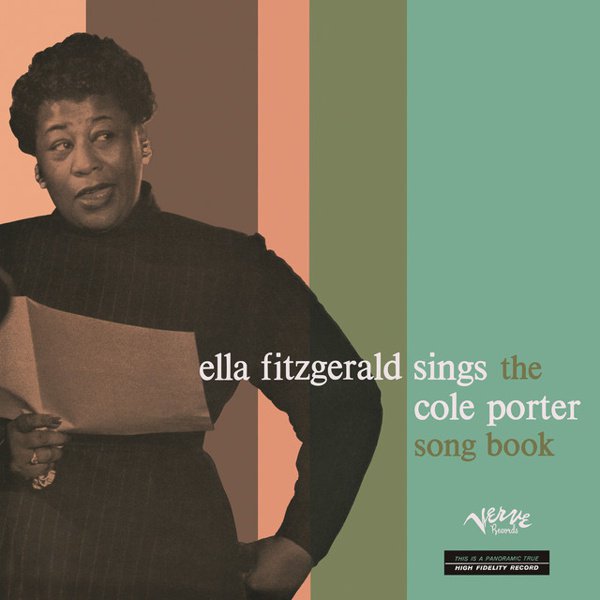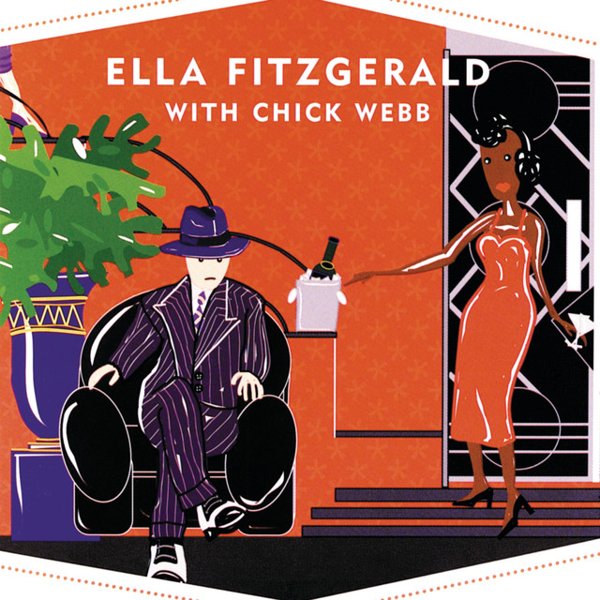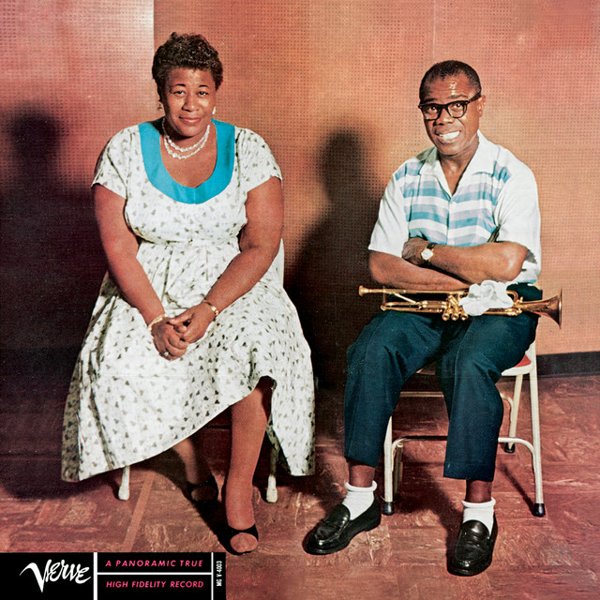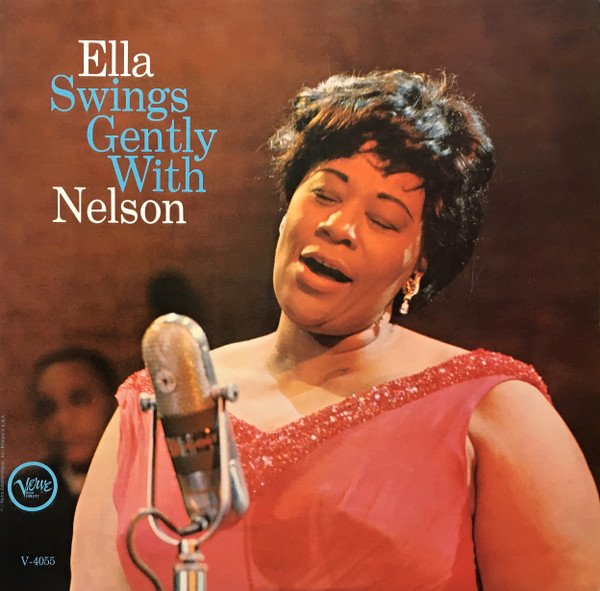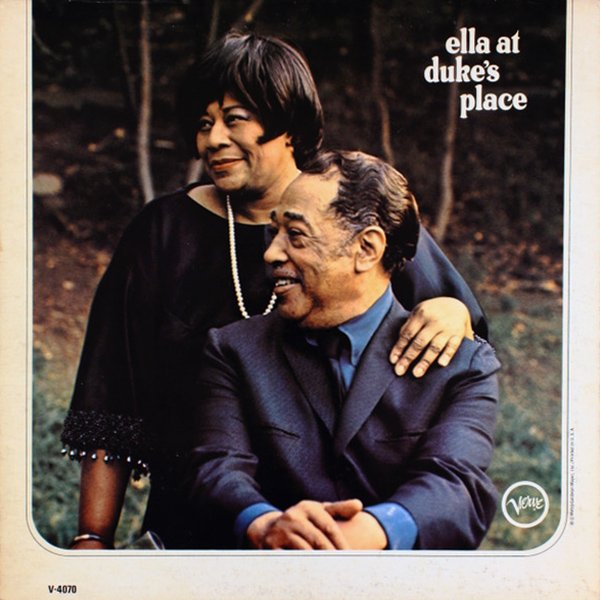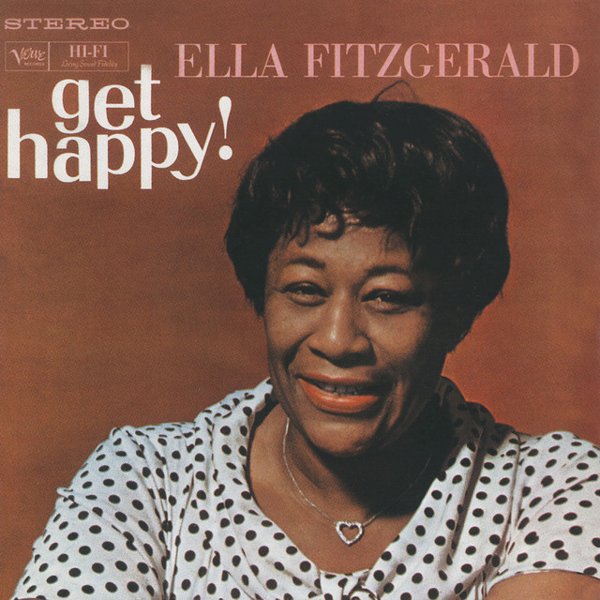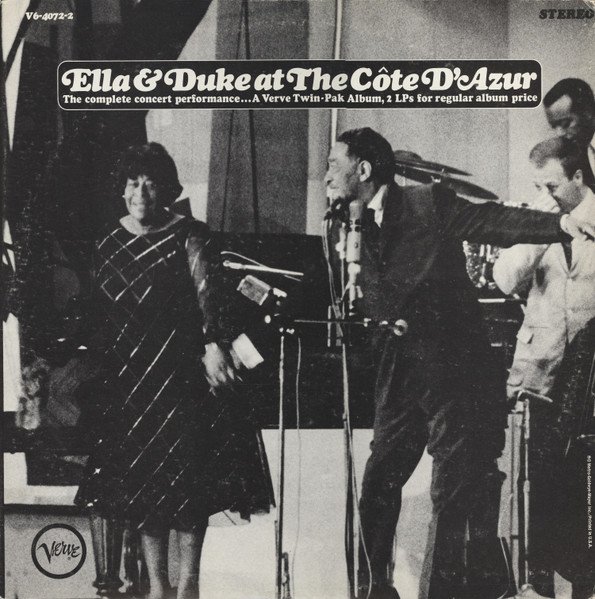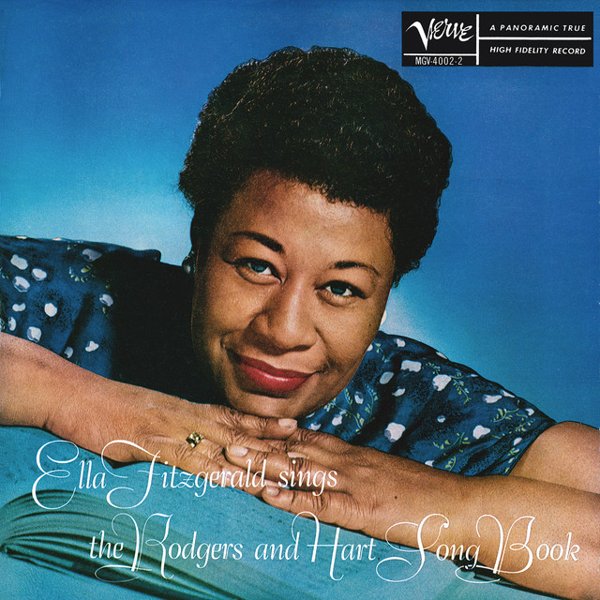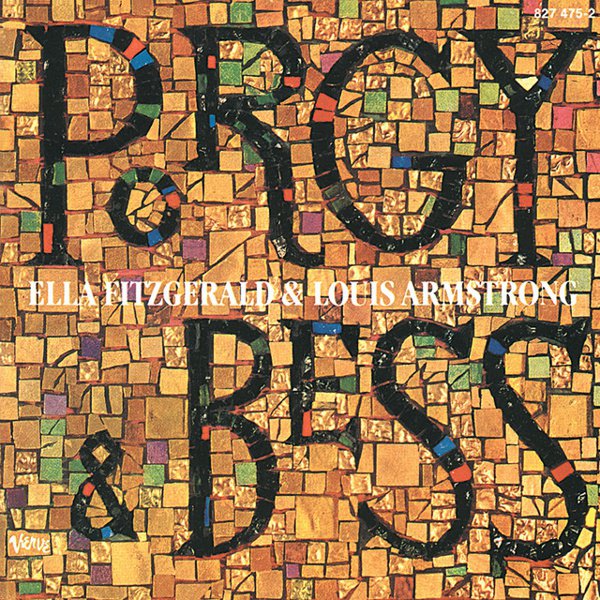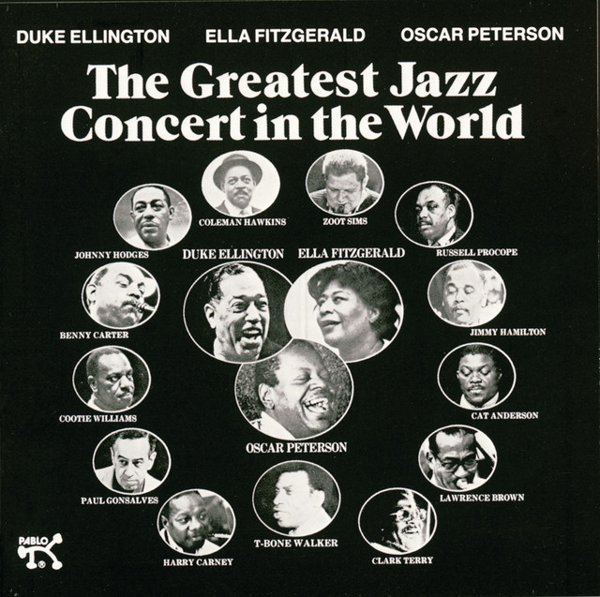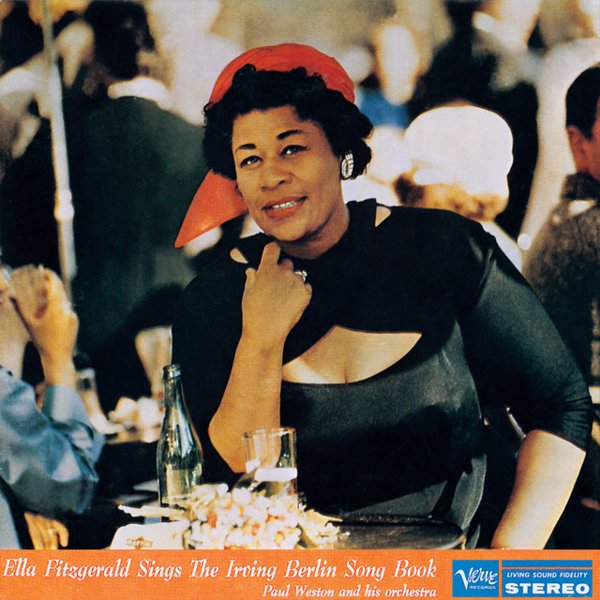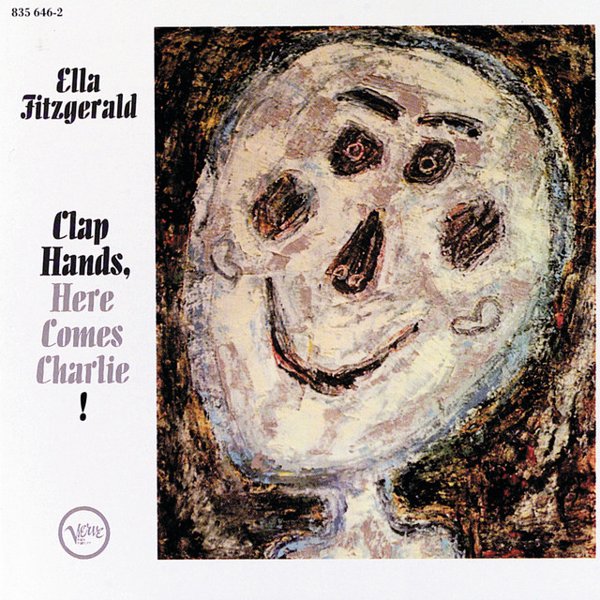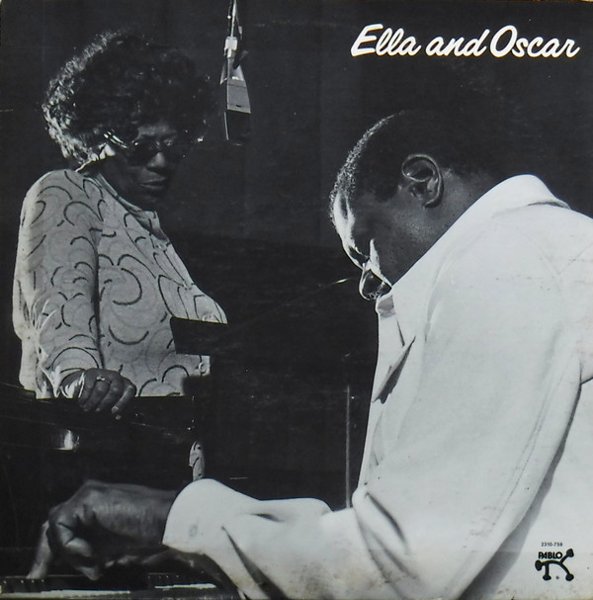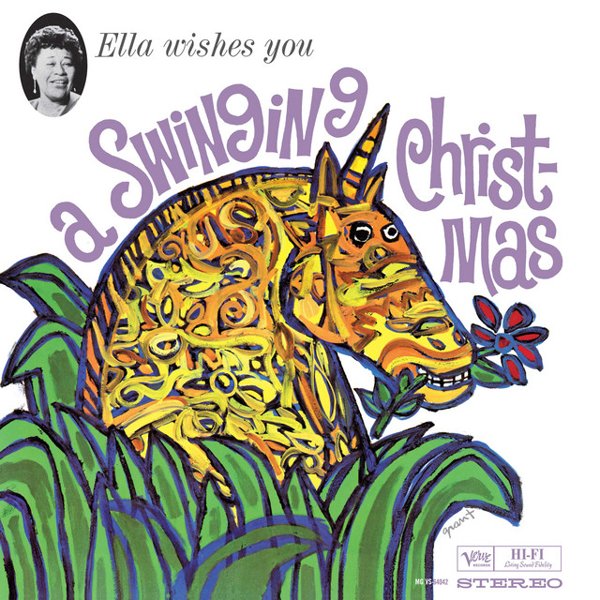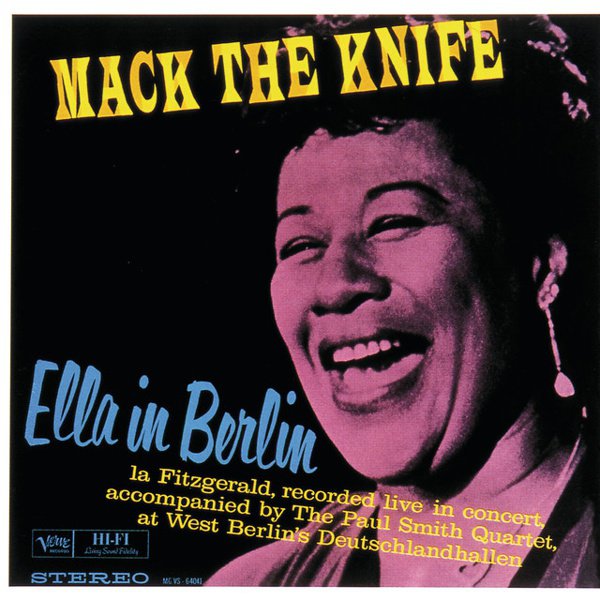Ella Fitzgerald’s origin story is wonderful: scheduled to perform as a dancer as part of an Amateur Night program at the Apollo Theater in 1934, she found herself slated to follow the Edwards Sisters, whose skills were so advanced that she spontaneously decided to sing instead of dance when her turn came. She ended up taking first prize that night, and one of the most storied careers in the history of American music was born.
Fitzgerald’s first major job was as the singer for drummer Chick Webb’s orchestra; with him she had several hit songs, the biggest of which was a jazz arrangement of the nursery rhyme “A-Tisket, A-Tasket.” Upon Webb’s untimely death in 1939 she took over the orchestra (rebranding the group as Ella Fitzgerald and Her Famous Orchestra) and recorded with them for another several years before embarking on a new phase of her career as a pioneering bebop vocalist, quickly becoming a leading exponent of wordless “scat” singing. After several years with Decca she joined producer Norman Granz and his new Verve label, and at his urging recorded what would become not only key achievements in her career but also a landmark jazz project: the Great American Songbook series. She also made a series of well-received albums alongside Louis Armstrong, on which the contrast between his high-spirited declamatory growl and her sweet, pure vocal tone created something both delightful and truly unique. Jazz standards would form the core of her repertoire for the remainder of her career, though she took occasional interesting stylistic detours (including a live album in 1969 that featured startling and odd arrangements of Cream’s “Sunshine of Your Love” and the Beatles’ “Hey Jude” alongside more traditional jazz fare). Ella Fitzgerald remains perhaps the most celebrated jazz singer of all time.

